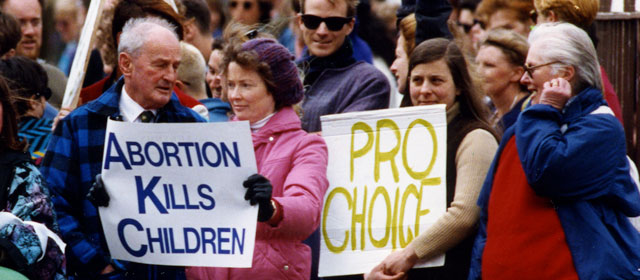Story summary
Abortion is the deliberate ending of a pregnancy. Until the late 1930s it was illegal, unless a woman’s life was in danger if the pregnancy continued. After that it was only allowed when the woman’s life or mental health was in danger. Abortion was still strongly disapproved of.
Back-street abortions
Because of the difficulty of getting a legal abortion, many women had illegal abortions. They usually wanted them because they were unmarried, or couldn’t cope with more children. Women either caused a miscarriage themselves or paid someone else for an abortion. This could be dangerous, and many women died or were injured by botched abortions.
It is hard to know how many women had illegal abortions. Statistics of women who went to hospital after an abortion went wrong show that in 1934 at least 42 women died.
For and against
Because back-street abortions were so dangerous, some people argued in favour of making safe abortions more widely available. Others believed that abortion was wrong, or was to blame for the falling birth rate.
From the late 1960s the issue became heated, due to changing attitudes to sex and women’s rights. Groups on either side of the abortion debate became organised, held protests and lobbied the government.
Changing law
From 1974 to 1983 there were law changes related to abortion, and a royal commission looked into the issue. The Sisters Overseas Service helped many women travelled to Australia for abortions, as they were easy to get there.
After the Contraception, Sterilisation and Abortion Act 1977 certifying consultants had to agree that physical or mental health made abortion necessary, but hospital boards set up abortion clinics, and had to fund lawful abortions. In practice, it became easier for women to get a legal abortion.
The debate in the 2000s
Activism for and against abortion waned in the 1990s, but re-emerged in the 2000s when new anti-abortion groups formed. This was partly in response to the introduction of an abortion pill.





